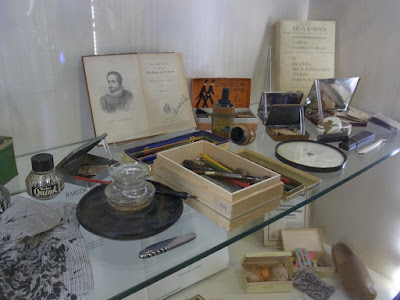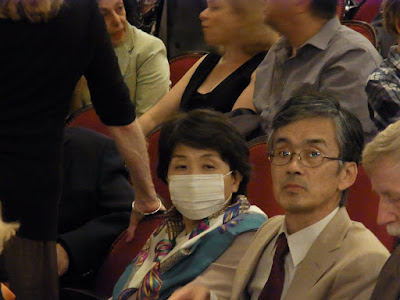
One for every year Hungarians have been able to utter Imre Nagy's name in public:
1. Does any city have more phone booths?
2. The pizza here is good!
3. Andras Torok's observation, in his quirky "Budapest: A Critical Guide," that one shouldn't try to ride a bicycle in the city except on Sundays before 9 a.m., is sorely of date. I can't think of a better urban European bike experience outside of the Lowlands. Motorists on the Pest side, in particular, are quite sporting.
4. If you find the touristed areas of Prague and Vienna a bit precious, you may find Budapest's griminess refreshing. I do. Once the sun goes down, however, the night sky acts as a concealer and it's pretty much a fairyland.

5. Hungarians smoke a lot. Aside from public conveyances, you can pretty much light up anywhere.
6. When paying in a restaurant, don't thank the waiter when he takes your money. Doing so can be construed as completing the transaction, and you won't get your change.
7. Using the trams and subway, you can reach any place in the city center in 15 minutes, tops. It's easy to overestimate how much time you'll need. The 14-day pass requires a passport-size photo. Individual tickets are good for 60 minutes -- enough time to get halfway to Zagreb.
8. The notion that English is widely spoken is something of a canard. The podcasts at LetsLearnHungarian.net are a fun way to learn basic phrases. And making the effort is universally appreciated.
9. Channel 53 is the greatest sports channel ever. At 2 a.m. one morning, I watched Hal Sutton hold off a charge by the Golden Bear in the 1983 PGA at Riviera, narrated by John Facenda.
10. District Six (Oktogon and environs) has outlawed package-liquor sales after 11 p.m. Most corner stores ignore it.
11. Soproni tastes like peaches. Dreher tastes like ass juice. Stick to the Czech beers.
12. Even the cheap white wine is drinkable. The cheap reds are turpentine. With notable exceptions, this is white-wine country.
13. My neighborhood bar, Kiado Kocsma, has good music (Pixies right now) and a tasty menu. Try the winecream soup and the smoked-cheese mashed potatoes.
14. The recession/depression has taken its toll, of course. Even well-dressed, clean-shaven retirees may politely ask for a few forints. But in the city center there are surprisingly few shuttered storefronts.
15. If Sandra Bernhard were a city, she would be Budapest. Striking but not pretty.
16. Budapest is chizzeap! My apartment is centrally located with Wi-Fi, cable TV and bicycles, all for 35E a night.
17. The center-right goverment is worth watching, in a whatchoo-talkin'-'bout-Willis kind of way. Sure, the Socialists were a disaster, but now all Hungarian print, broadcast and online media have been placed under the control of a "National Media Authority." These are not European values. Just cut it out.
18. The prostitutes here approach you and say, "Sex," without any inflection of a question, as if they were saying "chair," or "tree" or "muffin." Sure, hon, what could possibly go wrong?
19. In Hungary, like Korea, last names come first. Liszt Ferenc (Franz), Bartok Bela and the like.
20. The one website I wish I'd discovered before I came here.
21. Worried about transpo to and from the airport? Try Alajos Pulai. Dude's a machine.
22. Think I hear him pulling up now. Fiddlesticks.
End















































